PROMETON
- CAS NO.:1610-18-0
- Empirical Formula: C10H19N5O
- Molecular Weight: 225.29
- MDL number: MFCD00047343
- EINECS: 216-548-0
- SAFETY DATA SHEET (SDS)
- Update Date: 2024-12-18 14:15:32
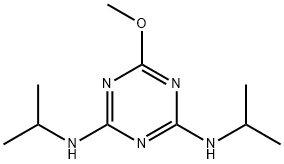
What is PROMETON?
Chemical properties
Colorless crystalline solid or white powder. Odorless.
The Uses of PROMETON
Nonselective herbicide.
The Uses of PROMETON
Nonselective preemergence and postemergence herbicide used to control most annual and perennial broad-leaved weeds, grasses and brush weeds on noncrop land.
What are the applications of Application
Prometon is A herbicide
Definition
ChEBI: A methoxy-1,3,5-triazine that is 6-methoxy-1,3,5-triazine-2,4-diamine in which the one of the hydrogens of each amino group is substituted by an isopropyl group.
Hazard
Toxic by ingestion.
Agricultural Uses
Herbicide: A non-selective pre-emergence and post-emergence herbicide. Use around buildings, storage areas, industrial sites, fences, recreational areas, rights-of-way, railroads, pipelines, lumberyards, tank farms, and similar areas. Controls broadleaf weeds and grasses over an extended period of time. Not listed for use in EU countries. Registered for use in the U.S.
Trade name
ACME® Prometon; G-31435®; GESAFRAM® 50; GESAFRAM®; GESAGRAM®; GROUND ZERO®; KLEENWALK®; NIX®; NOXALL®; ONTRACK®; PRIMATOL® (prometon); PROMETONE®; WEED-GO®
Potential Exposure
A nonselective pre-emergence and postemergence triazine herbicide. Use around buildings, storage areas, industrial sites, fences, recreational areas, rights-of-way, railroads, pipelines, lumberyards, tank farms, and similar areas. Controls broadleaf weeds and grasses over an extended period of time
Environmental Fate
Soil. Degrades in soil yielding hydroxy metabolites and dealkylation of the side chains
(Hartley and Kidd, 1987).
Photolytic. Pelizzetti et al. (1990) studied the aqueous photocatalytic degradation of
prometon and other s-triazines (ppb level) using simulated sunlight (λ >340 nm) and
titanium dioxide as a photocatalyst. Prometon rapidly degraded forming cyanuric acid,
nitrates, the intermediate tentatively identified as 2,4-diamino-6-hydroxy-N,N′-bis(1-methylethyl)-1,3,5-triazine and other intermediate compounds similar to those found for atrazine. Mineralization of cyanuric acid to carbon dioxide was not observed (Pelizzetti et al.,
1990).
Shipping
UN2763 Triazine pesticides, solid, toxic, Hazard Class: 6.1; Labels: 6.1-Poisonous materials.
Incompatibilities
Incompatible with oxidizers (chlorates, nitrates, peroxides, permanganates, perchlorates, chlorine, bromine, fluorine, etc.); contact may cause fires or explo- sions. Keep away from alkaline materials, strong bases, strong acids, oxoacids, epoxides. UV causes decomposition.
Waste Disposal
Dissolve or mix the material with a combustible solvent and burn in a chemical incinerator equipped with an afterburner and scrubber. All federal, state, and local environmental regulations must be observed. In accordance with 40CFR165, follow recom- mendations for the disposal of pesticides and pesticide containers. Containers must be disposed of properly by following package label directions or by contacting your local or federal environmental control agency, or by contacting your regional EPA office.
Properties of PROMETON
| Melting point: | 118-121℃ |
| Boiling point: | 366.8°C (rough estimate) |
| Density | 1.1038 (rough estimate) |
| refractive index | 1.7610 (estimate) |
| storage temp. | 0-6°C |
| solubility | DMSO (Slightly), Methanol (Slightly) |
| pka | 4.36±0.41(Predicted) |
| form | Solid |
| color | White to Pale Beige |
| Water Solubility | 0.75g/L(21 ºC) |
| Merck | 13,7880 |
| EPA Substance Registry System | Prometon (1610-18-0) |
Safety information for PROMETON
| Signal word | Warning |
| Pictogram(s) |
 Exclamation Mark Irritant GHS07 |
| GHS Hazard Statements |
H302:Acute toxicity,oral H315:Skin corrosion/irritation H319:Serious eye damage/eye irritation H335:Specific target organ toxicity, single exposure;Respiratory tract irritation |
| Precautionary Statement Codes |
P261:Avoid breathing dust/fume/gas/mist/vapours/spray. P305+P351+P338:IF IN EYES: Rinse cautiously with water for several minutes. Remove contact lenses, if present and easy to do. Continuerinsing. |
Computed Descriptors for PROMETON
New Products
4-Fluorophenylacetic acid 4-Methylphenylacetic acid N-Boc-D-alaninol N-BOC-D/L-ALANINOL Tert-butyl bis(2-chloroethyl)carbamate 3-Morpholino-1-(4-nitrophenyl)-5,6-dihydropyridin- 2(1H)-one Furan-2,5-Dicarboxylic Acid Tropic acid S-2-CHLORO PROPIONIC ACID ETHYL ISOCYANOACETATE 2-Bromo-1,3-Bis(Dimethylamino)Trimethinium Hexafluorophosphate (6-METHYL-[1,3]DITHIOLO[4,5-b]QUINOXALIN-2-ONE INDAZOLE-3-CARBOXYLIC ACID 4-IODO BENZOIC ACID (2-Hydroxyphenyl)acetonitrile 4-Bromopyrazole 5,6-Dimethoxyindanone 2-(Cyanocyclohexyl)acetic acid 4-methoxy-3,5-dinitropyridine 2-aminopropyl benzoate hydrochloride 1-(4-(aminomethyl)benzyl)urea hydrochloride diethyl 2-(2-((tertbutoxycarbonyl)amino) ethyl)malonate tert-butyl 4- (ureidomethyl)benzylcarbamate Ethyl-2-chloro((4-methoxyphenyl)hydrazono)acetateRelated products of tetrahydrofuran
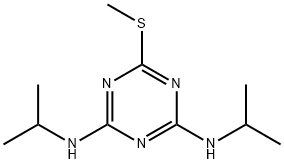
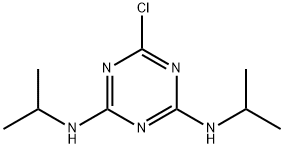
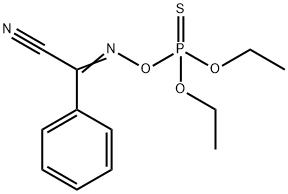
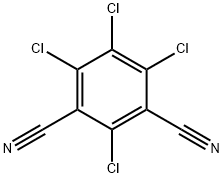

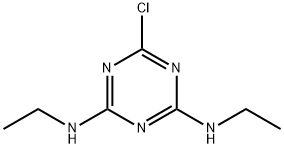
![METHYL 4-{[4,6-BIS(ISOPROPYLAMINO)-1,3,5-TRIAZIN-2-YL]OXY}BENZOATE](https://img.chemicalbook.in/StructureFile/ChemBookStructure3/GIF/CB6140735.gif)

You may like
-
 2033-24-1 98%View Details
2033-24-1 98%View Details
2033-24-1 -
 42831-50-5 5-METHYLISOXAZOLE-4-CARBOXYLIC ACID 98%View Details
42831-50-5 5-METHYLISOXAZOLE-4-CARBOXYLIC ACID 98%View Details
42831-50-5 -
 1975-50-4 98%View Details
1975-50-4 98%View Details
1975-50-4 -
 2-HYDROXY BENZYL ALCOHOL 98%View Details
2-HYDROXY BENZYL ALCOHOL 98%View Details
90-01-7 -
 2-Chloro-1,3-Bis(Dimethylamino)Trimethinium Hexafluorophosphate 221615-75-4 98%View Details
2-Chloro-1,3-Bis(Dimethylamino)Trimethinium Hexafluorophosphate 221615-75-4 98%View Details
221615-75-4 -
 61397-56-6 CIS BROMO BENZOATE 98%View Details
61397-56-6 CIS BROMO BENZOATE 98%View Details
61397-56-6 -
 14714-50-2 (2-Hydroxyphenyl)acetonitrile 98+View Details
14714-50-2 (2-Hydroxyphenyl)acetonitrile 98+View Details
14714-50-2 -
 118753-70-1 98+View Details
118753-70-1 98+View Details
118753-70-1